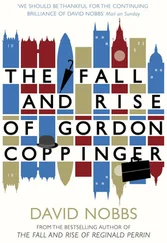Moments after takeoff, the pilots made a U-turn over Boston Harbor and pointed the plane west, flying through clear skies several miles above the wide asphalt ribbon of the Massachusetts Turnpike, headed toward the New York border.
DURING THE FIRST fourteen minutes of Flight 11, pilots John Ogonowski and Tom McGuinness followed instructions from an FAA air traffic controller on the ground and eased the 767 up to 26,000 feet, just under its initial cruising altitude of 29,000 feet. They spoke nineteen times with air traffic control during the first minutes of the flight, all brief, routine exchanges, automatically recorded on the ground, mostly polite hellos and instructions about headings and altitude.
The smell of fresh-brewed coffee wafted through the cabin as flight attendants waited for the pilots to switch off the Fasten Seatbelt signs. First-class passengers would soon enjoy “silver service,” provided by Karen Martin and Bobbi Arestegui, with white tablecloths for continental breakfast. Business passengers would receive similar but less fancy options from attendants Sara Low and Jean Rogér, with help from Dianne Snyder. Muffins, juice, and coffee would have to sustain passengers in coach, served by Betty Ong and Amy Sweeney, with Karen Nicosia working in the rear galley. The lone male attendant, Jeffrey Collman, would help in coach or first class as needed. Regardless of seating class, everyone on board would be invited to watch comedian Eddie Murphy talk to animals during the in-flight movie, Dr. Dolittle 2 .
Fifteen minutes into the flight, shortly before 8:14 a.m., the pilots verbally confirmed a radioed request from an air traffic controller named Peter Zalewski to make a 20-degree right turn. The plane turned. Sixteen seconds later, Zalewski instructed Flight 11 to climb to a cruising altitude of 35,000 feet. The plane climbed, but only to 29,000 feet. No one in the cockpit replied to Zalewski’s order. Ten seconds passed.
Zalewski tried again. Soft-spoken, forty-three years old, after nineteen years with the FAA, Zalewski had grown accustomed to the relentless pressure of air traffic control. He spent his days in a darkened, windowless room at an FAA facility in Nashua, New Hampshire, known as Boston Center, one of twenty-two regional air traffic control centers nationwide. A simplified way to describe the job done by Zalewski and the 260 other controllers at Boston Center would be to call it flight separation, or doing everything necessary to keep airplanes a safe distance from one another. Zalewski’s assignment called for him to keep watch on his radar screen, or “scope,” for planes flying above 20,000 feet in a defined area west of Boston. When they left his geographic sector, they became another FAA controller’s responsibility.
When Zalewski received no reply from the pilots of Flight 11, he wondered if John Ogonowski and Tom McGuinness weren’t paying attention, or perhaps had a problem with the radio frequency. But he didn’t have much time to let the problem sort itself out. He began to grow concerned that, at its current altitude and position, Flight 11 might be on a collision course with planes flying inbound toward Logan. Zalewski checked his equipment, tried the radio frequency Flight 11 used when it first took off, then used an emergency frequency to hail the plane. Still he heard nothing in response.
“He’s NORDO,” Zalewski told a colleague, using controller lingo for “no radio.” That could mean trouble, but this sort of thing happened often enough that it didn’t immediately merit emergency action. Usually it resulted from distracted pilots or technical problems that could be handled with a variety of remedies. Still, silent planes represented potential problems for controllers trying to maintain separation. As one of Zalewski’s colleagues tracked Flight 11 on radar, moving other planes out of the way, Zalewski tried repeatedly to reach the Flight 11 pilots.
8:14:08 a.m.: “American Eleven, Boston.”
Fifteen seconds later, he called out the same message.
Ten seconds later: “American one-one … how do you hear me?”
Four more tries in the next two minutes. Nothing.
8:17:05 a.m.: “American Eleven, American one-one, Boston.”
At one second before 8:18 a.m., flight controllers at Boston Center heard a brief, unknown sound on the radio frequency used by Flight 11 and other nearby flights. They didn’t know where it came from, and they couldn’t be certain, but it sounded like a scream.
ZALEWSKI TRIED AGAIN. And again. And again. Still NORDO.
Another Boston Center controller asked a different American Airlines pilot, on a plane inbound to Boston from Seattle, to try to hail Flight 11, but that didn’t work, either. That pilot reported Flight 11’s failure to respond to an American Airlines dispatcher who oversaw transatlantic flights at the airline’s operations center in Fort Worth, Texas.
Then things literally took a turn for the worse.
Watching on radar, Zalewski saw Flight 11 turn abruptly to the northwest, deviating from its assigned route, heading toward Albany, New York. Again, Boston Center controllers moved away planes in its path, all the way from the ground up to 35,000 feet, just in case. This was strange and troubling, but sometimes technology failed, and still neither Zalewski nor anyone else at Boston Center considered it a reason to declare an emergency.
Then, at 8:21 a.m., twenty-two minutes after takeoff, someone in the cockpit switched off Flight 11’s transponder. Transponders were required for all planes that fly above 10,000 feet, and it would be hard to imagine any reason a pilot of Flight 11 would purposely turn it off.
Without a working transponder, controllers could still see Flight 11 as a dot on their primary radar scopes, but they could only guess at its speed. They also had no idea of its altitude, and it would be easy to “lose” the plane amid the constant ebb and flow of air traffic. Seven minutes had passed since the pilots’ last radio transmission, after which they failed to answer multiple calls from Zalewski in air traffic control and from other planes. The 767 had veered off course and failed to climb to its assigned altitude. Now it had no working transponder. All signs pointed to a crisis of electrical, mechanical, or human origin, but Zalewski still couldn’t be sure.
Zalewski turned to a Boston Center supervisor and said quietly: “Would you please come over here? I think something is seriously wrong with this plane.”
But he refused to think the worst without more evidence. When the supervisor asked if he thought the plane had been hijacked, Zalewski replied: “Absolutely not. No way.” Perhaps it was wishful thinking, but it remained possible in Zalewski’s mind that an extraordinarily rare combination of mechanical and technical problems had unleashed havoc aboard Flight 11.
Zalewski’s mindset had roots in his training. FAA controllers were taught to anticipate a specific sign or communication from a plane before declaring a hijacking in progress. A pilot might surreptitiously key in the transponder code “7500,” a universal distress signal, which would automatically flash the word HIJACK on the flight controller’s green-tinted radar screen. If the problem was mechanical, a pilot could key in “7600” for a malfunctioning transponder, or “7700” for an emergency. Otherwise, a pilot under duress could speak the seemingly innocuous word “trip” during a radio call when describing a flight’s course. An air traffic controller would instantly understand from that code word that a hijacker was on board. Boston Center had heard or seen no verbal or electronic tipoffs of a hostile takeover of Flight 11.
But all that training revolved around certain narrow expectations about how hijackings transpired, based on decades of hard-earned experience. Above all, those expectations relied on an assumption that one or both of the pilots, John Ogonowski and Tom McGuinness, would remain at the controls.
Читать дальше












